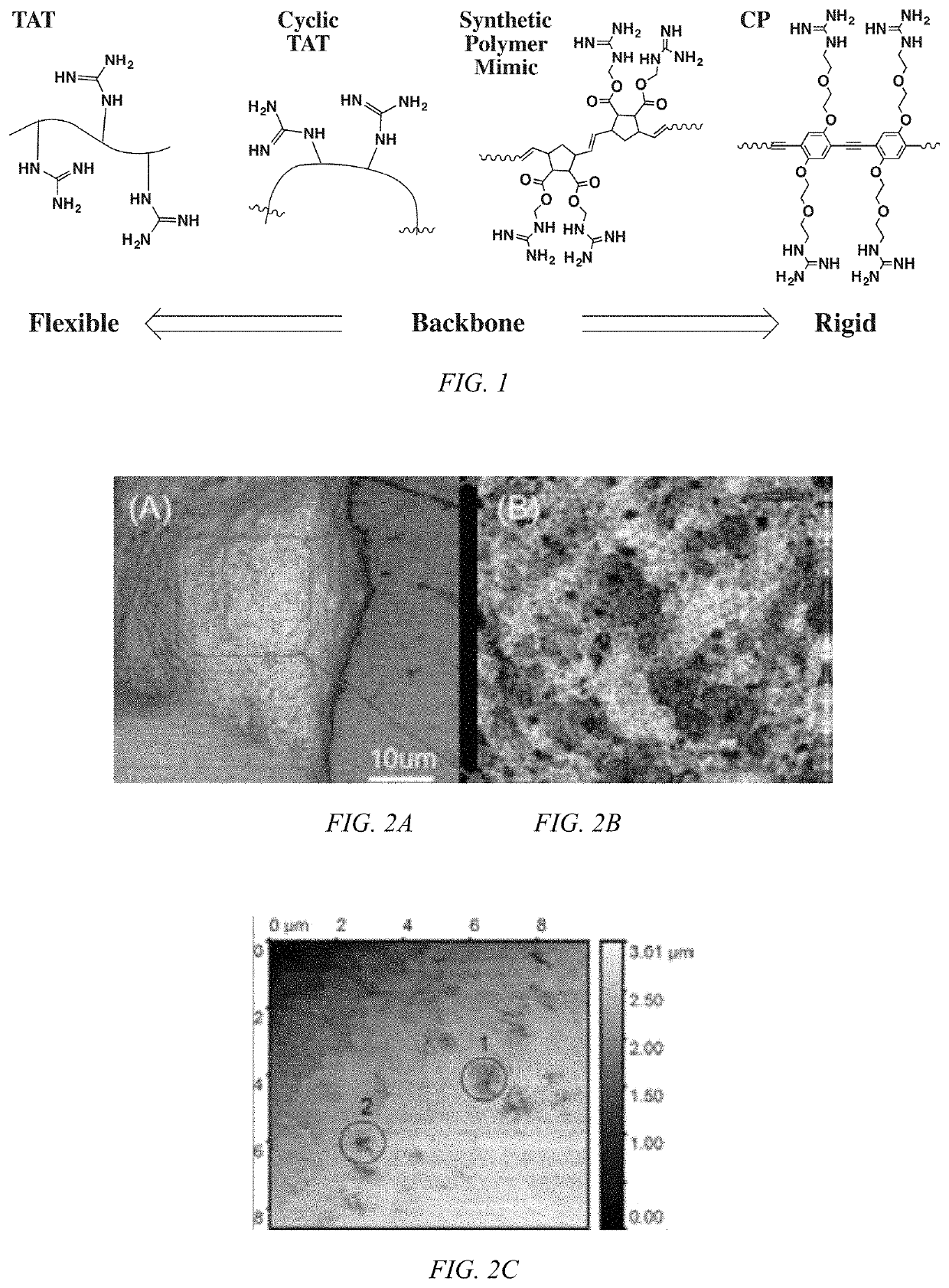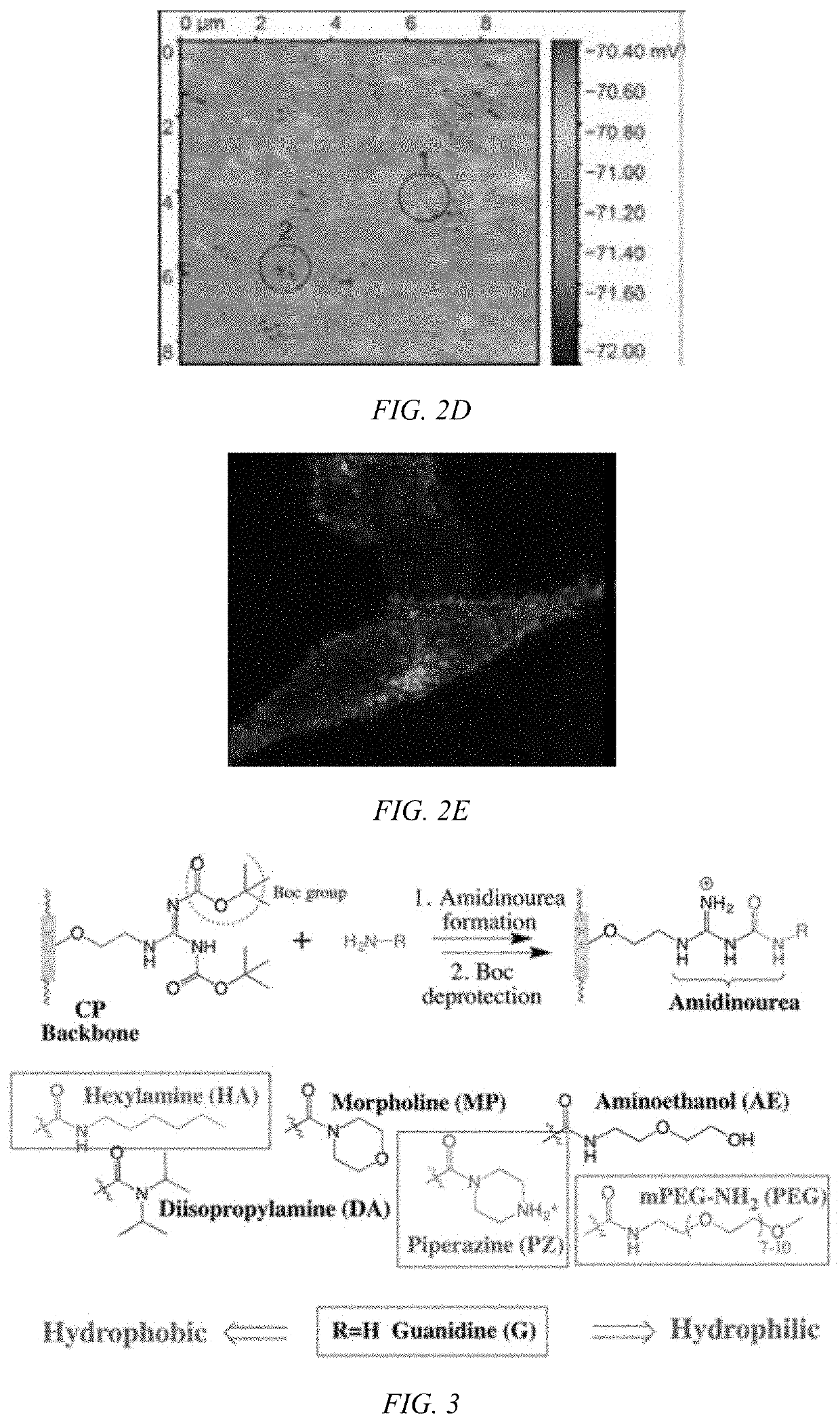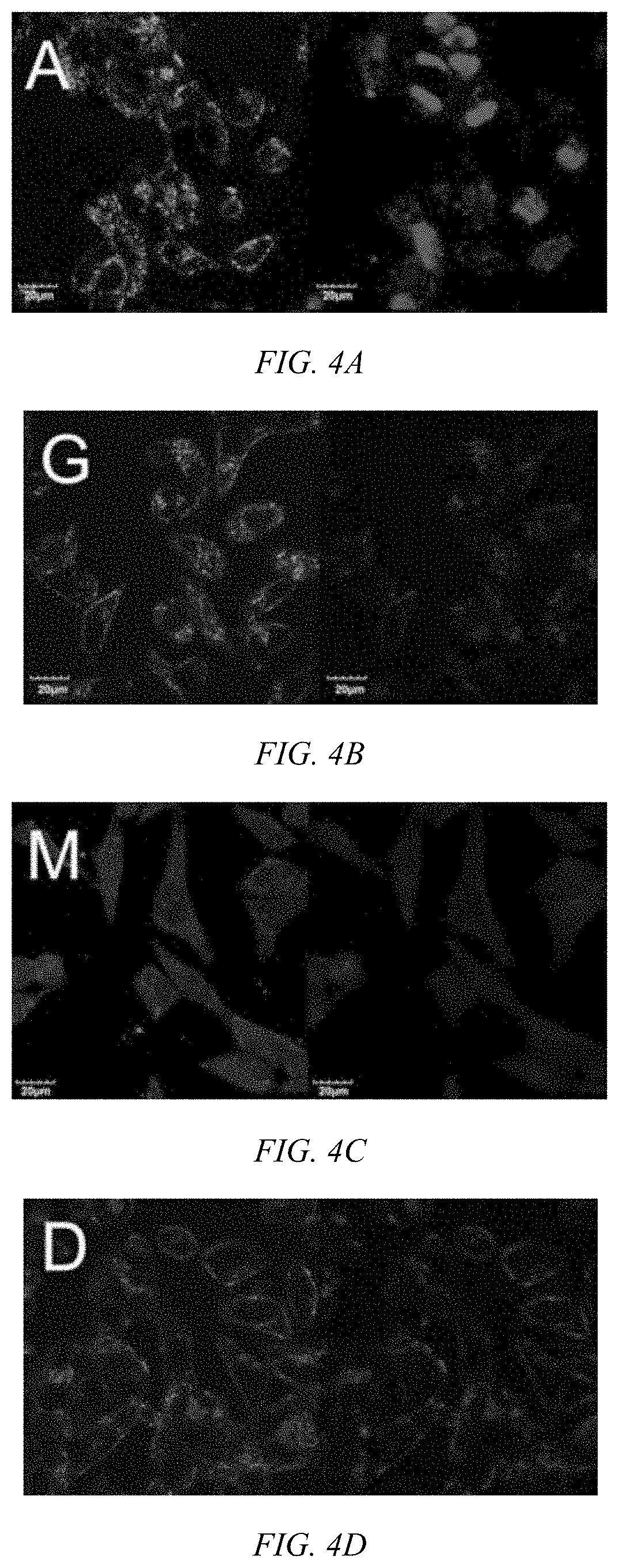Modulated guanidine-containing polymers or nanoparticles
a technology of guanidine and polymer, which is applied in the direction of capsule delivery, drug compositions, organic chemistry, etc., can solve the problems of rna molecules being too big to penetrate the cellular membrane, ovca is becoming resistant, and patients are exhausting their treatment options, so as to enhance or assist the passage of therapeutic agents
- Summary
- Abstract
- Description
- Claims
- Application Information
AI Technical Summary
Benefits of technology
Problems solved by technology
Method used
Image
Examples
examples
Methods and Materials
Materials
[0174]Reagents and solvents were purchased from Fisher Scientific and used without further purification. Deuterated solvents were purchased from Cambridge Isotope Laboratories (Cambridge, Mass.). All solutions were prepared using deionized (DI) water (˜18MΩ) from water purification system (Ultra Purelab system, ELGA / Siemens). The number average molecular weight (Mn), weight average molecular weight (Mw), and polydispersity index (PDI=Mw / Mn) of CPs were determined by gel permeation chromatography (GPC) against polystyrene standards using a Shimadzu high performance liquid chromatography (HPLC) system fitted with PLgel 5 μm MIXED-D columns and SPD-20A ultraviolet-visible (UV-vis) detector at a flow rate of 1.0 mL / min. Samples for GPC, small amount (˜100 μL) of polymer in dimethylformamide (DMF) or dichloromethane (DCM) was diluted with 1 mL of HPLC grade THF and then filtered through a 0.45 μM polytetrafluoroethylene (PTFE) syringe filter prior injection....
PUM
| Property | Measurement | Unit |
|---|---|---|
| hydrodynamic diameter | aaaaa | aaaaa |
| hydrodynamic diameters | aaaaa | aaaaa |
| hydrodynamic diameters | aaaaa | aaaaa |
Abstract
Description
Claims
Application Information
 Login to View More
Login to View More - Generate Ideas
- Intellectual Property
- Life Sciences
- Materials
- Tech Scout
- Unparalleled Data Quality
- Higher Quality Content
- 60% Fewer Hallucinations
Browse by: Latest US Patents, China's latest patents, Technical Efficacy Thesaurus, Application Domain, Technology Topic, Popular Technical Reports.
© 2025 PatSnap. All rights reserved.Legal|Privacy policy|Modern Slavery Act Transparency Statement|Sitemap|About US| Contact US: help@patsnap.com



